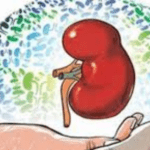Researchers examined the relationship between distressing and persistent psychotic-like experiences (PLEs) in youth and important risk factors for psychopathology in a new study. The researchers discovered that youth who report having persistent, distressing PLEs have impairment in a variety of areas, including cognition and reported psychopathology, highlighting the long-term challenges these children may face and the importance of early intervention and support.
/social-anxiety-5091930-Final-1d68a5657c5a4794bd41f73c12fbdbf7.jpg)
The study, which was funded by the National Institutes of Health, was published in the journal Molecular Psychiatry.” Although we know that some children have psychotic-like experiences, it has remained unclear which of these children will go on to develop psychotic disorders later in life,” said Shelli Avenevoli, Ph.D., deputy director of the National Institute of Mental Health (NIMH) and one of the study’s authors. “This study demonstrates that children who have persistent, distressing psychotic-like experiences face significant developmental challenges, implying the importance of early intervention for all children with these experiences, regardless of whether they develop psychotic disorders.”
PLEs, such as mild perceptual abnormalities or delusional thoughts, affects more than 17% of children aged 9 to 12. Only a small percentage of these children will develop psychotic disorders. If the psychotic experiences are persistent and/or distressing, this could help distinguish clinically relevant PLEs from benign ones. Nicole Karcher, Ph.D., of Washington University School of Medicine in St. Louis, and colleagues investigated the extent to which persistent and/or distressing PLEs were associated with risk factors for psychosis in this study.
The researchers used data from the Adolescent Brain Cognitive Development (ABCD) study, a large-scale research effort gathering data on 9 and 10-year-olds across the United States. The researchers analyzed data collected at three different points between September 1, 2016, and October 15, 2018. This included baseline data collected near the start of the study period, as well as data, collected one and two years later. Children were assessed for PLEs and the level of distress associated with the experiences at each of these time points.
The researchers divided the data into four groups: persistent distressing PLEs, transient distressing PLEs, persistent non-distressing PLEs, and transient non-distressing PLEs. PLEs were considered persistent if they were reported in at least two waves of data collection, and distress was measured using a self-report survey. They then looked at how these four groups differed in terms of various risk factors for psychosis. These factors included indicators of psychopathology, functioning (e.g., how children perform in school and use of mental health services), cognitive abilities, developmental milestone achievement, environmental adversity, adverse childhood experiences, and brain structure and function, all of which were measured at the first baseline time point.
Overall, those with both distressing and persistent PLEs had the most functional impairments and used the most mental health services in the study. Furthermore, youth who had persistent, distressing PLEs had more bipolar, externalizing, and internalizing symptoms than youth who did not have persistent, distressing PLEs.
The most significant effects on cognitive functioning, such as greater deficits in fluid cognition, including working memory and receptive language, were also observed in adolescents with persistent, distressing PLEs.
Youth with persistent, distressing PLEs also faced more significant environmental adversity than their peers, including higher levels of overall deprivation and more adverse childhood experiences.
The researchers also discovered that children who had distressing PLEs, whether transient or persistent, had delayed developmental milestone achievement, lower cortical and subcortical brain volumes, and differences in brain network connectivity compared to children who did not have distressing PLEs.”These novel longitudinal data highlight that persistent PLEs are frequently associated with impairments only in the context of distress,” Dr. Karcher said.
According to the findings of this study, children with persistent, distressing PLEs have elevated risk factors in domains such as psychopathology, functioning, and cognitive performance.
These findings imply that persistent, distressing PLEs are an important screening indicator of youth who develop long-term challenges, regardless of whether they develop psychotic disorders, and may indicate which children are prime candidates for early intervention.
______
Impairment | Don’t forget to follow us on Twitter @njtimesofficial. To get latest updates





